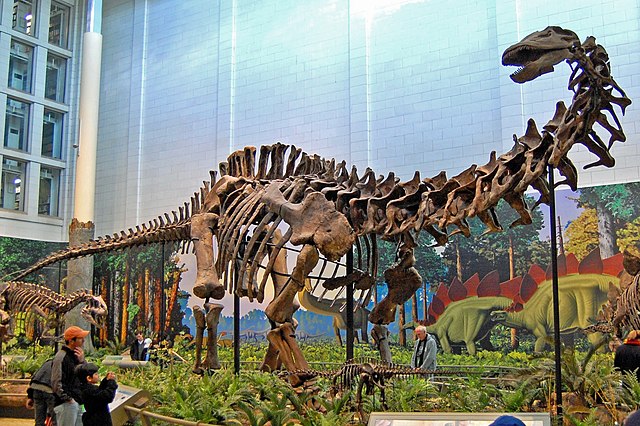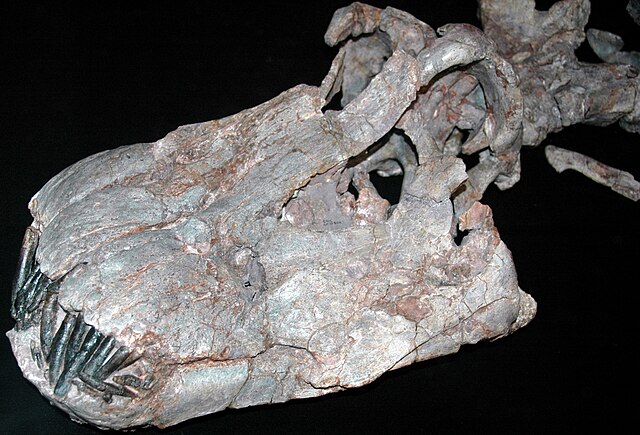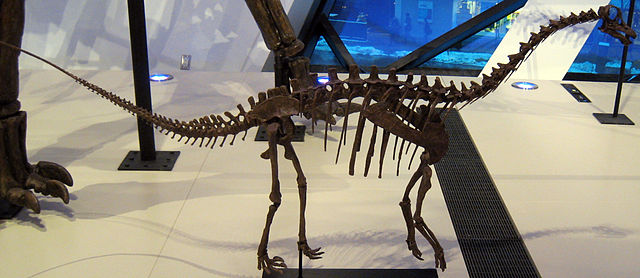Apatosaurus is a genus of herbivorous sauropod dinosaur that lived in North America during the Late Jurassic period. Othniel Charles Marsh described and named the first-known species, A. ajax, in 1877, and a second species, A. louisae, was discovered and named by William H. Holland in 1916. Apatosaurus lived about 152 to 151 million years ago (mya), during the late Kimmeridgian to early Tithonian age, and are now known from fossils in the Morrison Formation of modern-day Colorado, Oklahoma, New Mexico, Wyoming, and Utah in the United States. Apatosaurus had an average length of 21–23 m (69–75 ft), and an average mass of 16.4–22.4 t. A few specimens indicate a maximum length of 11–30% greater than average and a mass of approximately 33 t.
Apatosaurus
A. ajax skull, specimen CMC VP 7180
Artistic interpretation of A. louisae
Arthur Lakes' painting of YPM crews excavating fossils of Apatosaurus ajax at Quarry 10 in Morrison.
Sauropoda, whose members are known as sauropods, is a clade of saurischian ('lizard-hipped') dinosaurs. Sauropods had very long necks, long tails, small heads, and four thick, pillar-like legs. They are notable for the enormous sizes attained by some species, and the group includes the largest animals to have ever lived on land. Well-known genera include Apatosaurus, Argentinosaurus,
Alamosaurus, Brachiosaurus, Camarasaurus, Diplodocus, and Mamenchisaurus.
Sauropoda
Reconstruction of Ampelosaurus
Some sauropods, such as Alamosaurus sanjuanensis, formed herds segregated by age.
Cast of Toni, a juvenile brachiosaurus (restored as a diplodocid)







